Mark Sisson's Blog, page 312
January 19, 2014
Weekend Link Love
 In case you missed the news, The Primal Blueprint Podcast is now live. Listen to the first episode and submit your voicemail questions for future podcasts here.
In case you missed the news, The Primal Blueprint Podcast is now live. Listen to the first episode and submit your voicemail questions for future podcasts here.
Research of the Week
Coffee is just as hydrating as water, new research confirms.
Recent analysis of frozen mammoth carcasses from over 40,000 years ago reveals ample amounts of subcutaneous and visceral fat, including plenty of saturated fat and omega-3s. Seems not all wild animals our ancestors hunted and ate were lean, starved things after all.
Interesting Blog Posts
Are the relatively meager cardiovascular benefits of statins in the elderly worth the risk of serious side effects?
Dopamine hacking: how breaking up goals into smaller tasks that you can easily complete helps you beat procrastination.
Media, Schmedia
Butter, bacon, and bone broth: a writer spends a week on the Laker’s new diet.
The monkeys at a UK zoo have switched from bananas to vegetables. Since the change, their coats and gut health have improved, and they’ve become more sociable and less aggressive.
Everything Else
Man do I wish I had access to the recipes behind some of these beauties.
Nine ways processed food makes us fat – another strong list from Business Insider.
How a researcher is using cheese made from human armpit, belly button, and foot bacteria to help people become more accepting of our microbial passengers.
Here’s why you need to sleep, guys.
A great talk from a doctor who used dietary modifications to completely eliminate her daughter’s symptoms of autism.
This guy did the no ‘poo thing before it was cool. Plus he smokes a pipe. What a hipster.
Although we aren’t the cyborgs of modern sci-fi (yet), we’ve nonetheless augmented our brains with technology. This appears to be causing atrophy to certain areas of our brain (memory and attention, namely), but does it matter?
Recipe Corner
If you’re going to make this Paleo Middle Eastern saffron chicken, be careful where you get your saffron. You wouldn’t want to end up on some FBI watch list.
I don’t usually go for foodie descriptors like “chili-kissed,” but I can’t deny the allure of something called cocoa chili-kissed cauliflower.
Time Capsule
One year ago (Jan 20 – Jan 26)
Weight Loss: The Emotional Element – You’ve got the physical side of weight loss figured out pretty well, but how do you get past the psychological baggage holding you back?
Co-Sleeping: How to Do It Safely – In which you learn how to safely share a bed with your baby.
Comment of the Week
In regards to the hunter-gatherer population that experienced tooth decay … In the original article, the authors state that the acorns were possibly consumed raw due to the rarity of charred remains found. Raw acorns increases the tannic and phytic acid load in the diet, which can lead to mineral deficiencies, which can ultimately lead to tooth decay. Most wild food experts will tell you that acorns must be leached and cooked properly in order to remove the anti-nutrients. So to say that sweet acorns lead to tooth decay may be accurate … only if they are not processed in the proper way.
- Great point that bears repeating, Adam. Thanks for the clarification.
Like This Blog Post? Dig Deeper with Primal Blueprint Books and Learn How You Can Reprogram Your Genes to Become Leaner, Stronger and Healthier

January 18, 2014
Swiss Chard Fritters
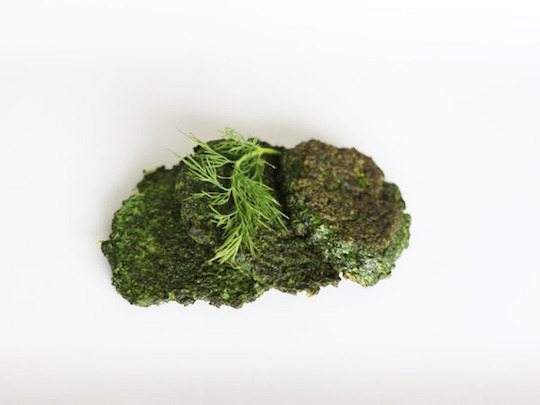 With some time and effort, you could probably shape these Swiss chard fritters into gorgeous, perfectly round discs. But here’s the thing – they’re going to be eaten up so quickly, it’s not really worth the effort. Straight out of a hot pan, Swiss chard fritters are crunchy on the outside, creamy in the middle and have the delicate flavor of Swiss chard, dill and parsley.
With some time and effort, you could probably shape these Swiss chard fritters into gorgeous, perfectly round discs. But here’s the thing – they’re going to be eaten up so quickly, it’s not really worth the effort. Straight out of a hot pan, Swiss chard fritters are crunchy on the outside, creamy in the middle and have the delicate flavor of Swiss chard, dill and parsley.
Tired of greens simply sautéed in olive oil? Swiss chard fritters are a new way to keep nutrient-rich greens in regular rotation in your diet. Serve a side of Swiss chard fritters for breakfast with eggs or next to a steak for dinner and you’ll also be serving up impressive amounts of vitamins K, A, C, E, B2, B6 and B1. Plus, zinc, folate, calcium, fiber…the list goes on and on.
Swiss chard fritters are delicious with just a squirt of lemon but also quite tasty dipped in homemade mayo. A combination of coconut and tapioca flours make these fritters a sturdy base for appetizers; lox or salmon roe could be delicious on top. (For a more delicate fritter, try using only 1 tablespoon of tapioca flour).
Servings: 10 to 12 small fritters
Time in the Kitchen: 30 minutes
Ingredients:

1 pound Swiss Chard (one large bunch), bottom stalks removed (450 g)
1/2 cup chopped flat-leaf parsley (120 ml)
1/3 cup chopped fresh dill (80 ml)
1 garlic clove, pressed or finely chopped
1/2 teaspoon grated nutmeg (a pinch)
1 tablespoon coconut flour (7 g)
2 tablespoons tapioca flour (14 g)
1/2 teaspoon kosher salt (2.5 ml)
2 eggs
Olive oil, coconut oil or lard for frying
A wedge of lemon
Instructions:
Bring a pot of lightly salted water to a boil. Add the Swiss chard leaves and simmer for 5 minutes. Drain and cool briefly with cold water then squeeze as much liquid out as you can. Roughly chop the leaves.
In a food processor, combine the chard with the herbs, garlic, nutmeg, flours, salt and eggs. Process briefly, just until the ingredients are well combined and the texture is similar to pesto.
Pour a thin layer of oil into a frying pan over medium-high heat. Drop 3 heaping, separate tablespoons of batter into the pan, pressing down on each one to make a fritter that is 2 or 3 inches (5 to 7.6 cm) wide. Expect the fritters to be misshapen. Fry for 3 minutes, then flip, and fry 2 to 3 minutes more. Continue this process until all the batter is used.

Serve warm with a squirt of lemon.

Not Sure What to Eat? Get the Primal Blueprint Meal Plan for Shopping Lists and Recipes Delivered Directly to Your Inbox Each Week

January 17, 2014
A Family Affair: Mother, Father and Sisters Go Primal and Reap Benefits
It’s Friday, everyone! And that means another Primal Blueprint Real Life Story from a Mark’s Daily Apple reader. If you have your own success story and would like to share it with me and the Mark’s Daily Apple community please contact me here. I’ll continue to publish these each Friday as long as they keep coming in. Thank you for reading!
 Hi Mark!
Hi Mark!
Every Friday, I take my obligate study break and read each week’s success story, hoping one day that I could be featured. I am still a work in progress. It seems as if every day I find a new thing to lament. But reflecting back on this year, I must say that I’ve come really far and would like to share my story with the world.
I’d been overweight for most of my life. I weighed 70 lbs at age 3. There is an infamous picture of me in my kindergarten graduation cap and gown at that age (my parents started me in school early) that hangs in my parents’ living room. My chubby face is dead-center, with cheeks so plump, my eyes look forced shut. Every year, I dreaded getting weighed. I hated seeing my doctor write down ever-increasing numbers. Then, it became the rule to get weighed at school. The teacher would announce everyone’s weight as they stepped off the scale. The first time they instituted this rule, I was 9 years old and in the fifth grade…and weighed a whopping 125 pounds. My weight steadily crept up until I got to my heaviest of 175 at age 15. Mind you, I am very short. During this time, I was 5’2”, so every pound of weight gain immediately made itself known on my slight frame. When I saw that 175 I lost it. I made a resolution to lose the weight no matter what.
And I did. But in the most unhealthy way imaginable. I decided that I would eat 500 calories a day and work out for 2 hours each day, on top of that. I attended an elite preparatory school on the Upper East Side of Manhattan, where we had chefs cook our breakfasts, snacks, and lunches. The cafeteria abounded with homemade rolls, carrot-ginger dressings, pies, tons of ice cream flavors, croissants, rich buttery sauces, rice, pasta, anything your heart could desire and your mind could think of. It was a culinary heaven. But when I decided to embark on my 500 calorie quest, I stuck to water and fruit. Day in and day out. Dinner would be low calorie hot chocolate made from a processed mix and water with toast. I took “Advanced Fitness” as my gym class in school, and would diligently walk on the treadmill for 30 minutes at the highest incline I could stand and then do 30 minutes of weight lifting. I even stuck to this during the holidays, doing at home workouts and eating just salad. In just 5 months, I lost 55 pounds. I was a frail-looking 120 pounds. But seeing that number made me so happy.
I remember going to a lake house my uncle and aunt had rented for a weekend getaway for our family. I hadn’t seen them in about 6 months, and when I stepped out of the car, their jaws dropped. I, initially, was happy to see this response. But their eyes told the truth. My uncle and aunt, both doctors, looked worried, shocked, and even somewhat disgusted. “Why’d you lose so much weight?”, they asked. “Don’t you know how you can mess up your body, your hormones, doing all this unnecessary stuff?”, they yelled. But I didn’t care. I was thin and proud.
I maintained this weight loss almost effortlessly through junior and senior years of high school and then as a freshman at Yale University. I ate whatever I wanted, worked out, and gained about 5 pounds, but felt this was a “healthier” weight for me. Then magically, I weighed myself during my sophomore year of college and weighed 135. Then during junior year, 150. I was so scared that the weight I had lost was coming back. So I embarked on yet another weight loss journey, this time turning to Insanity at-home workouts and low carb dieting. In just two months, I went back down to 125. I started senior year looking and feeling great.
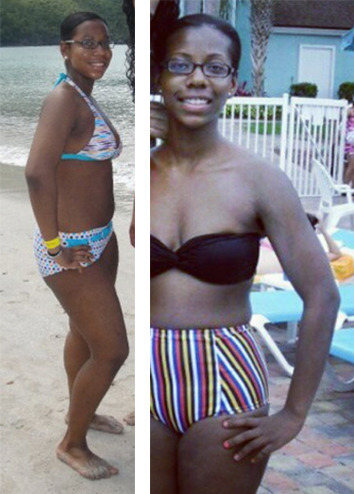
The first pic is me during junior year of college, when I had regained most of the weight I had lost at the end of high school, weighing around 150. The second pic is me at 125-130 right after college. Still eating low carb without any worry about the nutritional qualities of my food. Smaller but still noticeably skinny-fat/without much definition.
Or so I thought. Ever since I had lost weight the first time, I’d have pesky issues bothering me. I noticed I had long sideburns. Then I noticed hairs on my chin. Then sprouting up in the middle of my cheeks! I noticed that my periods were extra long and heavy, lasting 10 days. I remember sitting on a toilet for about two hours on the second day of one of my periods because the flow was so heavy my sanitary napkin was soaked within 5 minutes. I also remember the immense pain associated with my periods. I’d be curled up in a ball on the bathroom floor asking God why he was punishing me. More than a few times, I had to be taken to the hospital. Then my periods started coming irregularly, to the point where I sometimes had two per month. And my skin was horrible. Constant breakouts, not just of the superficial, pustule kind, but the achy, deep, cystic ones too. My skin was oily and slick. Constant picking at my skin left a mottled mix of raw skin, scars, and hyperpigmentation on my face. I was wearing makeup to school to hide these issues every day. I cried (man, I cried a lot when I was younger) about not being able to show my true skin and be myself. I didn’t socialize much and didn’t want to be seen in public. I often wished I could be reborn without all these weight and skin issues.
When these symptoms first started creeping up, at around age 16, I saw an endocrinologist and was diagnosed with PCOS. Ultrasound revealed that my ovaries were riddled with tons of tiny cysts. My only treatment option at the time was birth control. I tried it for a year and stopped because I saw no progress. During college, I finally worked up the courage to see a dermatologist and was immediately put on a plethora of things that she claimed would fix my skin: topical antibiotics, oral antibiotics, topical retinol, topical corticosteroids, the works. Every 3 months, I’d be trying new antibiotics because nothing seemed to work. It was a costly and frustrating time. My self-esteem was at an extreme low. Even though I had worked my weigh back down to 125, I felt like I was a mess. Here I was, graduating with Honors from one of the best colleges in the world, and I felt like my world was spinning out of control. I had lost the weight, but nothing was fixed. That’s when I realized that it was all about health and not about weight.
The week before I began my first year of medical school at the end of August 2012, I happened upon the Whole30 website. I immediately clicked on the Testimonial tab and scrolled down the list. No more acid reflux, uh huh. No more acne, ok, maybe I this might work for me. Then I scrolled down and saw testimonials for PCOS! I decided then and there to embark on my first Whole30. It was scary. I was used to the low carb life, but no beans or dairy, and I could actually eat sweet potatoes? I convinced myself that because my body would be working as it’s supposed to, my body could handle more nutrient-dense sources of carbs. And I went all in. Acne vanished. Skin lesions healed super fast. I happened upon your website and incorporated more Primal-based ideas of exercise, taking on heavy lifting, walking, and sprinting. My body fat melted. My muscles popped. From body-fat estimates, I started out at 25% and am now sitting at around 17%! I weigh around 135, which still in my mind is a bit too high, but fit into size 4 dresses with ease. I even managed to grow 2 inches! I felt, and still feel, like a new person! And this past spring, I had another ultrasound done and guess what? No cysts. And my periods come like clock work, and only last a few days. The cramping pain associated with them is much less severe, and I have noticed, darn-near unnoticeable if I stick to strict Primal. My facial hair has also reduced drastically, but because of my hair quality, I am prone to ingrown hairs. This issue, however, is being handled with holistic approaches to health (and electrolysis). I newly discovered Stefani Ruper, of Paleo for Women fame, and am now even more committed to this lifestyle for the long haul.

Me now!

Me now without acne!
More than beating my PCOS, I am especially thankful for this lifestyle because of the effect it has had on my family members. Seeing how much my health has improved, my mother, father, and sister have all embraced this lifestyle with success of their own. My mom, once a diabetic with high cholesterol, high blood pressure, and overweight has now gotten rid of all but one of her medications and has lost 30 pounds. My father, who once suffered from chronic pain and obesity, has lost 50 pounds and now routinely takes 4 mile walks whenever possible and is prone to turning on the radio at home and dancing like a mad man. My sister, who was starting to show signs of PCOS and who gained 50 pounds in just two years while at college, is now the leanest, meanest machine I’ve seen. I’ve even gotten one of my close college friends on track and we regularly update each other with the best Paleo recipe we’ve tried that week or our new favorite Paleo/Primal blogs.

My father at his heaviest, and my father now.

My sister and mom at their heaviest.

My sister and mom now.
I’m still working on getting rid of the hirsutism, and my new goal is to get a six-pack, haha. But I now recognize that even though I am a work in progress, I have made progress and I am not broken. Turning to the Paleo/Primal lifestyle has been the greatest thing to happen to my loved ones and me. Now, I can’t wait to be a primary care doctor and spread this message to my future patients!
Thanks, Mark! Couldn’t have done it without you!
Janelle
Get the 7-Day Course on the Primal Blueprint Fundamentals for Lifelong Health Delivered to Your Inbox for FREE

January 16, 2014
The Backbone Ritual: 6 Moves to Get Your Back Into the Groove
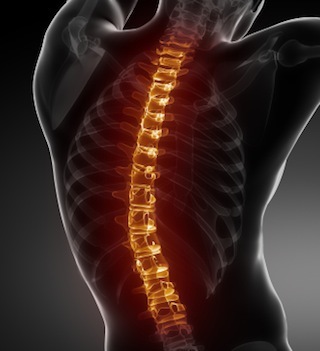 This is a guest post from personal trainer extraordinaire Angelo dela Cruz of DailyVitaMoves.com.
Join me, veteran PrimalCon presenter Angelo, and numerous other presenters and Primal enthusiasts from around the world at PrimalCon Vacation Tulum (Mar. 1-6) and the 5th annual PrimalCon Oxnard (Sept. 25-28) in 2014.
This is a guest post from personal trainer extraordinaire Angelo dela Cruz of DailyVitaMoves.com.
Join me, veteran PrimalCon presenter Angelo, and numerous other presenters and Primal enthusiasts from around the world at PrimalCon Vacation Tulum (Mar. 1-6) and the 5th annual PrimalCon Oxnard (Sept. 25-28) in 2014.
“Movement is life.” – Moshe Feldenkrais
When someone asks me to help them get out of pain or improve their muscle and joint function, it’s important for me to see the possibilities for them to be pain-free and return to the activities that they enjoy doing. For us to do this, in terms of musculoskeletal issues, one of the first things that I check is the state of their spine. It can tell us a lot about a person’s overall health.
The reason is because the spine is the main hub of our bodies. It’s the gateway from where our brain is able to communicate with the rest of our body. Major nerves and blood vessels branch out from the protection of our spine to all of our vital organs and limbs. When something goes wrong with the spine, it can negatively affect other parts of our body. When our spine doesn’t move properly, we could develop shooting pain down our leg, or tightness in our hip, or recurring shoulder injuries because of stiffness in our upper back.
Through targeted movement we can make a positive impact to improve the function of our spine, keep it in a healthier state, and hopefully prevent painful issues from developing in the future. Today, I’ll be taking you through a few movements that will release tight muscles in your back, stimulate common weak areas, and help mobilize and lubricate your joints. To increase the quality and effectiveness of these movements, let’s take a look at what we’ll be working with.
How ‘Bout Dem Bones & Joints
Nearly 30% of our joints in our entire body are found in our spine. The bones of our spine are called vertebrae and most of them are shaped like short cylinders with a bony arch on the back side that surrounds the spinal cord and spiny projections coming from the arch where muscles attach. There are 7 vertebrae that make up the cervical (neck) region and 12 that make up the thoracic (mid-back) region. Attaching to the thoracic vertebrae are our 12 ribs that house our heart and lungs. Making up our lumbar (low back) region are 5 larger vertebrae. Below that are 5 vertebrae and another set of 4 that have fused during adolescence to form the sacrum and coccyx respectively. Some of us may have one more or one less vertebrae in any region due to natural variations.
Sandwiched between each of our unfused vertebrae, with exception of the the first two cervical vertebrae, are intervertebral discs that are rings of firm rubbery material with a gelatinous middle, something like a jelly doughnut. (By the way, these are the most Primal sandwiches and jelly doughnuts you’ll ever come across!). These discs provide shock absorption and, along with spinal ligaments that connect each vertebrae to the next, allow our spine to bend or rotate and then come back to a resting position.
Connections That Move You
About 120 muscles attach to the spine that work to stabilize our body and, at the same time, allow us to create movements in many directions. Covering all of these muscles are web-like layers of connective tissue called fascia. Have you ever noticed that clear “plasticky” wrapping around a raw chicken breast filet? This fascia envelops our brain, our gut, our vital organs, every muscle fiber, bone, and joint of our bodies.1
There’s a special piece of fascia layered in the mid- and lower back termed the thoracolumbar fascia that connects deep spinal muscles to superficial ones. It also connects our mid- and lower back to our neck, arms, hips, and legs allowing these parts to coordinate movement together.2
(Side note: One of the most valuable investments you can make is to learn and discover the structure and function of your body. It can be fascinating and transformative. You can go to your nearest library and pick up any book on anatomy and physiology or surf the web for 30 minutes… or just dance!)
What These Moves Will Do For You
Our spines have the ability flex (curl), extend (arch), laterally flex (bend to the side), laterally shift (move left or right), and move in different combinations. We’ll be doing all of the above with the moves below. Our joints rely on movement for their health because there’s no direct blood supply to them, so immobility, chronic static stress – such as sitting in a chair – and repetitive stress can contribute greatly to dysfunction or premature degeneration. In the same regard, your muscles and fascia can suffer the same consequences. The purpose of these movements is to safely expose your spine to ranges of motion that they otherwise may not get during your regular day. Their aim is to decompress joints, stimulate snyovial fluid production (the “oil” of your joints), and improve the surrounding pliability and extensibility of the muscles, tendons, ligaments, & fascia. Also, they may help to restore the ability to contract your muscles in a more coordinated fashion.
The Magic Moves
Just as the number (and shape) of vertebrae and muscles will vary in each of us, so will the way we are able to move. These movements are simple, but may require some patience. Also, they should be done slowly, with control and ease, but with increasing challenge. It’s not about stretching or contracting vigorously as that won’t produce the outcome we’re aiming for. There should be no pain while performing any of these movements. If so, do not proceed.
We’ll be using multi-joint movements and isometric contractions (holding contractions with no movement) to calm down or release unconscious tightness in muscles3, decompress joints, and begin to stimulate weak muscles. (For proper strengthening of weak muscles, a strength training regimen is recommended.) Before we begin, let’s check in.
Assessment
Stand with feet hip-width apart and close your eyes. It’s important to get our own internal sense because no one can do it better.
After seeing what a spine looks like (video), imagine the spine in your body. How does it feel? Does it feel stable? Balanced? Mobile? Does it feel like it leans to one side, rotated to the left or right? Is there an area of tightness? Also, how is your breathing?
Another way to check in is to bend at the hips and reach your fingertips toward the ground in front of your feet. How does it feel going down? Going up?
Hip Flexion Hold
This will help release muscles in the chest, shoulder, hip and low back.
Stand with feet hip-width apart, bend and lift one knee until your thigh bone is 90º to your body.
Place your opposite hand on your knee keeping your arm straight with fingertips pointing to the outside of the knee.
Gently try to press knee and opposite shoulder towards each other.
Press the standing leg into the ground to make your leg “long”. You should feel your buttock contracting.
Hold for 3-5 seconds. Repeat for 3-5 repetitions each side.
Bird Dog/Crawl Lift
This will contract the buttock muscles and muscles along your spine, also targeting the lower trapezius muscle.
Get into a quadraped or bear crawl position.
Lift one straight arm 45º away from your head with thumb pointed to the sky. Try to bring your shoulder blade towards your opposite hip.
At the same time, lift your opposite leg, trying to bring the heel and the thumb of your lifting arm towards each other.
Also, turn and lift your head and look towards your thumb or, if you’re on your knee, towards your lifting heel.
Count 3 seconds as you lift as far as you can comfortably go and 3 seconds down.
If you’re feeling ambitious, hold the lifted position for 3 seconds.
Wag Dog
This will help release the muscles on the side of the neck and the quadratus lumborum muscle in the low back which has tendency to be tight and add a sustained compressive force to the spine.
In a quadraped position bring one shoulder and hip on the same side towards each other.
Also on the same side bring the ear towards the shoulder.
With your eyes, look towards the hip on the same side (you might not be able to actually see it).
Hold for 3-5 seconds and repeat 3-5 times each side.
Quadraped Spiral
This will move your spine in a circlular motion (circumduction) and will mobilize your joints in all directions. It will also massage your gut and internal organs. (Don’t be shocked if you need to run to bathroom after this.)
In a quadraped position pick a point on your spine in the lumbar region.
Gently and slowly move that point towards the sky and then circle to the left, then circle down towards the ground, and then to the right and back up to the sky making 3 revolutions one way and then the other.
Choose 3-5 different points working up your spine and repeat.
Windshield Wipers (with Head Turn)
This will contract stabilization muscles of your trunk and help decompress the spine by relaxing deep muscles that interveawe with the facet joints of your spine. This will also work the thoracolumbar fascia.
Lie on your back with your thigh bones 90º from your body and knees bent at 90º.
Place straight arms 45º from your body on the ground with palms faced down.
Keeping the thighs 90º from your body, let your knees slowly drop to the right and at the same time turn your head towards the left.
Rotate them as far as comfortable and trying to end their movements at the same time but not letting the knees rest on the ground.
Then bring your knees and face back towards center trying to have them meet in the middle (but not stopping) as they continue rotating to the opposite sides.
You can opt to hold at each side for 3-5 seconds.
Repeat on both sides 3-5 times each side.
Squat Push-up Circle – All Body Parts Active, Nothing Limp
This will massage your organs, mobilize the thoracolumbar fascia and help coordinate the use of many muscles and joints from head to toe at the same time.
Stand with feet a few inches wider than shoulder width and hands on knees.
Keep your spine and head in neutral position (the same position it’s in when standing) and begin to shift your weight to the left.
Let your arms support your upper body weight as your pelvis slowly lowers and circles to the right.
Push your feet into the ground and hands into your knees to circle your body back upright. It should take approximately 5 seconds to complete one circle.
Repeat in the opposite direction for 5 repetitions each side.
Re-Assess
Stand with feet hip-width apart
How does your spine feel now?
How does it feel to bend at the hips and touch the ground? Coming back up?
If you didn’t notice much change, you might not need to do these movements too much. If some of these were challenging, that’s indicative of needing to do these more frequently and consistently. I would suggest most people to start with one round of this “ritual” in the morning and then another round one hour before bed time. If you notice any soreness, wait until it subsides before you try it again. Also, feel free to do more repetitions or hold the contractions longer if you need more challenge.
There are many more movements that you can do to help keep a healthy spine, but I’ve tried to put together a good set of them that are safe and can be done by just about anyone, anywhere, anytime with nothing but your body and a little floor space. I hope these movements serve you well. Please feel free to share them with your friends and family.
Enjoy!
References
1 – Schleip, Robert, et al. “Fascia: The Tensional Network of the Human Body.”The Science and Clinical Applications in Manual and Movement Therapies. Churchill Livingstone, Edinburgh (2012).
2 – Hoheisel, U., T. Taguchi, and S. Mense. “Nociception: The thoracolumbar fascia as a sensory organ.” Fascia: The Tensional Network of the Human Body.(Eds: Schleip, Findley, Chaitow, and Huijing) (2012): 95-101.
3 – Chaitow, Leon, ed. Muscle Energy Techniques+ Videos. Churchill Livingstone, 2013.
Get the 7-Day Course on the Primal Blueprint Fundamentals for Lifelong Health Delivered to Your Inbox for FREE

January 15, 2014
The Big Unveil: Master Plans for 2014
 Greetings, everyone! I can’t believe it’s time for another annual preview post… It seems like my Jan 1, 2013, “Make 2013 Your Best Year Yet” post just went live. I remember feeling excited and a bit overwhelmed at the announcement of our grand ambitions to expand the movement one year ago, but pretty much all the endeavors mentioned at that time have been actualized in a similar shape and form (you know what they say about stating your intentions clearly and specifically…). We’ve expanded PrimalCon to other cities, published some acclaimed books (Primal Blueprint Publishing now has 15 titles in print – and more to come in 2014, see below), have numerous expert presenters spreading the word at Primal Transformation Seminars across the country, and conducted three life-changing luxury retreats with Vanessa and Adam Lambert in Malibu. Finally, my visions of a Primal cruise have morphed into the first-ever PrimalCon Vacation at the five-star Dreams Tulum resort on the Mayan Riviera just several weeks away.
Greetings, everyone! I can’t believe it’s time for another annual preview post… It seems like my Jan 1, 2013, “Make 2013 Your Best Year Yet” post just went live. I remember feeling excited and a bit overwhelmed at the announcement of our grand ambitions to expand the movement one year ago, but pretty much all the endeavors mentioned at that time have been actualized in a similar shape and form (you know what they say about stating your intentions clearly and specifically…). We’ve expanded PrimalCon to other cities, published some acclaimed books (Primal Blueprint Publishing now has 15 titles in print – and more to come in 2014, see below), have numerous expert presenters spreading the word at Primal Transformation Seminars across the country, and conducted three life-changing luxury retreats with Vanessa and Adam Lambert in Malibu. Finally, my visions of a Primal cruise have morphed into the first-ever PrimalCon Vacation at the five-star Dreams Tulum resort on the Mayan Riviera just several weeks away.
Last week I shared some of my plans for Mark’s Daily Apple blog posts this year, and you responded with enough ideas to keep me busy for a decade. I’ll be busy researching and writing this year, but I’ve got some other plans up my sleeve as well.
Here’s a quick rundown of my grand plans for 2014:
The Primal Blueprint Podcast – Now Available!
 Many of you have been requesting a Primal Blueprint podcast for years, and now it’s a reality. I have two podcasts available right now on our brand new Primal Blueprint Podcast blog:
Many of you have been requesting a Primal Blueprint podcast for years, and now it’s a reality. I have two podcasts available right now on our brand new Primal Blueprint Podcast blog:
Episode #1: Chronic Cardio with Mark Sisson
Episode #2: The 80/20 Rule with Mark Sisson
It’s also available on our iTunes channel where you can subscribe to automatically get every podcast we publish. Subscribe today so you never miss an episode. I’ll also alert you on MDA when a new podcast is available. We will publish many more episodes with me and other guests from the ancestral health community, so stay tuned!
One of things I’m most excited about with this podcast is interacting with you and answering your questions. To that end, we’ve installed a cool new tool called SpeakPipe so you can record a question for me and then hear the answer on a future podcast. Visit the Episode #1 link above to submit your question today. (I’ll keep the SpeakPipe widget available until we’ve received an adequate number of questions, so act fast!)
(Related to this, you may notice that PrimalBlueprint.com looks a little different. We went live with a new site design and shopping cart just this week, so it’s still in a beta phase of sorts and the checkout process might be a little different from what you are used to. If you notice anything out of the ordinary, please let us know via this contact form. We appreciate any feedback you have. Also, for technical and security reasons, customer accounts didn’t make the move to the new version of the site, so if you had one and would like one, you will need to create a new one. Or, you can check out as a guest without creating an account. It’s up to you!)
PrimalCon Vacation Tulum
 I have some fantastic news to report – the inclusion of four awesome new presenters to our lineup! Joining us in Tulum will be:
I have some fantastic news to report – the inclusion of four awesome new presenters to our lineup! Joining us in Tulum will be:
John Durant: Author of The Paleo Manifesto and NYC’s favorite caveman
Ben Greenfield: Author of Beyond Training: Mastering Endurance, Health and Life , Ironman triathlete, coach, and noted speaker
Keris Marsden and Matt Whitmore: Authors of The Paleo Primer and proprietors of the popular Fitter London fitness and lifestyle training center
Alessandra Wall, PhD: A clinical psychologist and CrossFit studette from San Diego, she’ll discuss the physical, emotional and cognitive challenges people face when trying to make diet and lifestyle habit changes.
Check out the PrimalCon Vacation Tulum page for more information on our newly added presenters, new video highlights from our existing presenters, and more details about the fabulous vacation we have planned. We’ve just negotiated our final room package with the rapidly filling resort and we only have 39 rooms and suites remaining. At this time have secured a block of several dozen fabulous Garden view rooms and suites – adjacent to the lush interior gardens and meandering swimming pools. Carrie and I stayed in this section of the resort during our site visit in 2013 and the accommodations were absolutely marvelous. Several folks have told me that some cheap flights are popping up on Kayak.com and Skyscanner.com for service to Cancun from all over North America and Europe. If you have any questions about this event, please call 888-774-6259 or email us so we can help you get to Tulum March 1st!
The Primal Advantage
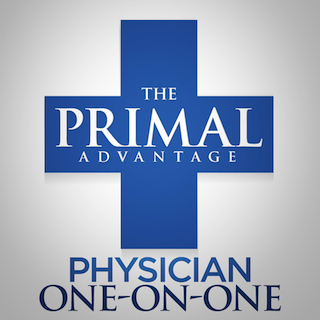 I’m overjoyed to announce an alliance with one of the brightest stars in the evolutionary health movement, Dr. Cate Shanahan. If you somehow don’t know who Cate is, she is a family practice physician from Napa, CA, author (with her husband Luke) of two extremely popular books, Deep Nutrition and Food Rules, and is also Director of Nutrition for the Los Angeles Lakers’ PRO (Performance, Recovery, Orthogenesis) Nutrition program, where she prepares customized menu plans for the Lakers during their travels and consults one-on-one with some of the most exceptional athletes in the world, including NBA legend Kobe Bryant, to help optimize metabolic function.
I’m overjoyed to announce an alliance with one of the brightest stars in the evolutionary health movement, Dr. Cate Shanahan. If you somehow don’t know who Cate is, she is a family practice physician from Napa, CA, author (with her husband Luke) of two extremely popular books, Deep Nutrition and Food Rules, and is also Director of Nutrition for the Los Angeles Lakers’ PRO (Performance, Recovery, Orthogenesis) Nutrition program, where she prepares customized menu plans for the Lakers during their travels and consults one-on-one with some of the most exceptional athletes in the world, including NBA legend Kobe Bryant, to help optimize metabolic function.
For the first time, you can have an actual Primal/paleo friendly doctor to consult with directly about your diet, blood profiles and custom action plan to ensure health and peak performance in the future. Dr. Cate is poised to serve anyone from those with disease risk factors to athletes looking for a competitive edge, like her Laker players. While only the lucky few have progressive-minded health professionals to utilize in their own community, Dr. Cate is poised to serve everyone via telephone and email consultations, and through our new partnership with WellnessFx that enables you to get bloodwork at a local lab and share the results with Cate. This program is set to launch in February so stay tuned for extensive details and enrollment information.
Primal Blueprint Expert Certification
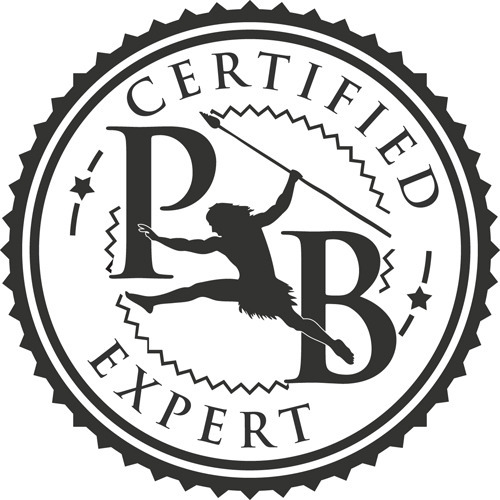 I know, this item was listed in the 2013 coming soon post! Well guess what – it’s really here and it’s worth the wait. In consultation with an impressive team of health and medical experts, I’m proud to say the finishing touches are being applied to the Primal Blueprint Expert Certification for release in February. This is a comprehensive online course that will give you the advanced knowledge and insights you need to help others embrace the Primal lifestyle.
I know, this item was listed in the 2013 coming soon post! Well guess what – it’s really here and it’s worth the wait. In consultation with an impressive team of health and medical experts, I’m proud to say the finishing touches are being applied to the Primal Blueprint Expert Certification for release in February. This is a comprehensive online course that will give you the advanced knowledge and insights you need to help others embrace the Primal lifestyle.
The coursework consists of videos and written material that are aligned with the 8 Key Concepts and 5 Action Items of the Primal Blueprint 21 Day Total Body Transformation. Each of the 13 “modules” that comprise the course provide extensive detail on these Key Concepts and Action Items, allowing you to fully grok and clearly communicate the how’s and why’s of going Primal. At the end of each module is a written exam (multiple choice and true/false) to confirm your knowledge of the subject matter. This course is ideal for fitness professionals looking to enhance their offering to clients, but is also a great experience for Primal enthusiasts who simply want to deepen their knowledge and understanding of the Primal Blueprint core principles and major talking points. This program is open to everyone – no professional credentials necessary. Expect the coursework to be on a par with an upper division college course, but explained in an easy to understand manner if you don’t have a scientific background. The exams are rigorous, but if you struggle we will work with you to ensure that you pass and receive your certification.
PrimalCon and Transformation Retreats
 We recently opened ticket sales for PrimalCon Oxnard, our fifth annual event at the Mandalay Beach Resort on September 25-28, 2014. And the previously leaked rumors about an early summertime PrimalCon East Coast event are picking up steam – expect an announcement later this month!
We recently opened ticket sales for PrimalCon Oxnard, our fifth annual event at the Mandalay Beach Resort on September 25-28, 2014. And the previously leaked rumors about an early summertime PrimalCon East Coast event are picking up steam – expect an announcement later this month!
With the great success of the Primal Blueprint Transformation Retreats (formerly known as Luxury Retreats) in 2013, Vanessa Lambert has restructured her role at Primal Blueprint to focus exclusively on ramping up these events in 2014 (and maybe even adding another location besides Malibu). We are finalizing plans for regularly occurring weekend retreats throughout the 2014 year, with the first one scheduled for April 10-13 in Malibu. Stay tuned for details on the Transformation Retreat calendar.
Primal Play Day
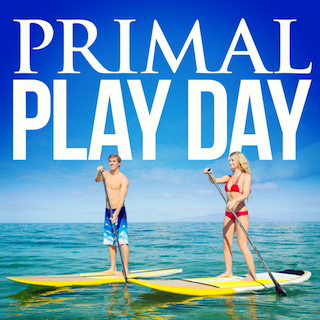 I know that not everyone can make it out to a full-on weekend retreat, so we’re kicking off a brand new event next month called Primal Play Day. Think of it as the best of PrimalCon jam packed into a single day. Each Play Day will start out with a 2-hour meet and greet, and hot topic discussion. Then there will be guided movement and mobility sessions, followed by a Primal picnic, and then an afternoon of paddle boarding and kayaking in the Pacific Ocean. This event is also led by our expert coaches Adam and Vanessa Lambert, and is designed for any fitness/skill level. The first Primal Play Day is scheduled for Saturday, February 15, in beautiful Malibu, CA, and is limited to 50 spots. So come out next month, learn a few things, move your body, play, have fun, eat some delicious food, and do it all with your fellow Primal enthusiasts.
I know that not everyone can make it out to a full-on weekend retreat, so we’re kicking off a brand new event next month called Primal Play Day. Think of it as the best of PrimalCon jam packed into a single day. Each Play Day will start out with a 2-hour meet and greet, and hot topic discussion. Then there will be guided movement and mobility sessions, followed by a Primal picnic, and then an afternoon of paddle boarding and kayaking in the Pacific Ocean. This event is also led by our expert coaches Adam and Vanessa Lambert, and is designed for any fitness/skill level. The first Primal Play Day is scheduled for Saturday, February 15, in beautiful Malibu, CA, and is limited to 50 spots. So come out next month, learn a few things, move your body, play, have fun, eat some delicious food, and do it all with your fellow Primal enthusiasts.
Primal Blueprint Publishing
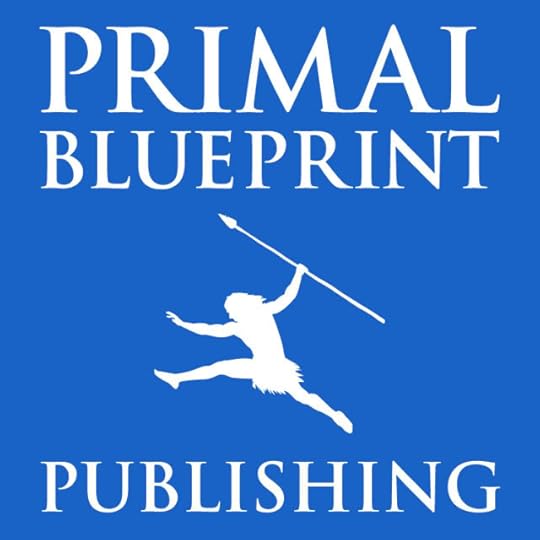 We have several books in the pipeline for 2014 release. I’ve mentioned many of these back in this May post, and we are learning that great books indeed take their sweet time to get to the finish line. Dr. Ronesh Sinha’s book, The South Asian Health Solution, is on the presses right now (pre-order available at amazon.com) and it’s an absolute masterpiece. We joke that it’s a shame this 400-page comprehensive health directive that blends primal principles with respected medical evidence and treatment methods is directed only toward South Asians, but this is an extremely high risk population that needs help. Dr. Ron’s success at his unique practice in the San Francisco Bay Area is quickly turning heads of even the most stodgy conventional wisdom docs – he’s getting folks off statins and into safe blood result ranges with Primal-style dietary modifications. He and his clinic partner won the 2013 Silicon Valley Business Journal Excellence in Healthcare award for their breakthrough results.
We have several books in the pipeline for 2014 release. I’ve mentioned many of these back in this May post, and we are learning that great books indeed take their sweet time to get to the finish line. Dr. Ronesh Sinha’s book, The South Asian Health Solution, is on the presses right now (pre-order available at amazon.com) and it’s an absolute masterpiece. We joke that it’s a shame this 400-page comprehensive health directive that blends primal principles with respected medical evidence and treatment methods is directed only toward South Asians, but this is an extremely high risk population that needs help. Dr. Ron’s success at his unique practice in the San Francisco Bay Area is quickly turning heads of even the most stodgy conventional wisdom docs – he’s getting folks off statins and into safe blood result ranges with Primal-style dietary modifications. He and his clinic partner won the 2013 Silicon Valley Business Journal Excellence in Healthcare award for their breakthrough results.
Leslie Klenke is putting the finishing touches on her masterpiece, The Primal Blueprint Teen, which she has created from cover to cover as a master graphic designer and first-time author. Doug McGuff’s Primal Prescription is really rounding into shape (mid-year release planned), and will get you thinking twice about the illusion of safety and security presented by the mainstream medical and pharmaceutical system. Carrie has been making great progress on Primal Woman, and while I’m only allowed to read brief snippets at this point (seriously!), I’m confident that this book will not disappoint – and will quite likely attract a significant number of readers from outside the ancestral health community.
With Primal Endurance, I have a ton of content and am poised to help revolutionize the conventional wisdom about endurance training and competition (along with guys like Ben Greenfield and Dr.’s Phinney and Volek), but I’m also taking my time as the science evolves so quickly. Every week, there is more to consider and ponder to get the message streamlined and understandable enough to help convert the millions of sugar dependency athletes to a more primal approach to training.
We also have a really cool children’s book in the works from our award-winning graphic designer and video whiz Janée Meadows, and a groundbreaking book on Play from the world’s most playful human, PrimalCon superstar Darryl Edwards.
Audio Books
We are making a strong push to offer audiobooks for nearly all of our titles in 2014. My wife Carrie is a huge audiobook consumer, and we’ve heard from many readers who say they have minimal time to read a complete print book, but plenty of time on commutes or during leisurely hikes to listen to audio books. For your convenience, we will be distributing our audio titles via popular traditional channels like Amazon’s Audible.com and iTunes, as well as directly from PrimalBlueprint.com. Our first two audio book releases will be the original Primal Blueprint (an abridged version read by yours truly) and an unabridged recording of The Primal Connection.
Primal Blueprint eBooks
We are also going to release an assortment of moderately priced eBooks of various lengths as a great outlet for many projects that might not be suitable for a full-scale print book, but are topics of great interest. We have four cool eBooks coming in the first quarter of 2014 – they’ll be available on Amazon.com for Kindle download. We have Andy Culbertson’s Picture Real Food, an incredibly creative, graphic intensive resource guide suitable for printout/handouts on meal planning, shopping and health benefits of Primal/paleo eating. We have a compilation of Primal Blueprint Success Stories, with inspiring photos and practical tips from people who walk their talk. And I wrote short form eBooks on two of my favorite topics, how (and why) to transition safely to a barefoot-intensive lifestyle, and how (and why) to optimize your vitamin D exposure with strategic sun exposure, supplementation and food choices.
As always, I look forward to hearing your comments and suggestions on what we have in store for an awesome 2014! Thanks for your interest and continued support.
Get the 7-Day Course on the Primal Blueprint Fundamentals for Lifelong Health Delivered to Your Inbox for FREE

January 14, 2014
Why Does the Paleo Diet Continue to Receive Low Points from “Established Authorities”?
 You may have heard the big news: the paleo diet ranked dead last in the US News and World Report diet rankings. When my inbox floods with links to the latest paleo bashing in the media, I don’t even get surprised or annoyed anymore. It amuses me. The one downside of this stuff is that work grinds to a halt for a few hours because a popular pastime around the Primal headquarters whenever one of these reports comes out is to see who can pick the ripest, most ridiculous misconceptions or blatant falsehoods. The big upside is even more publicity, more notoriety, and more laughter. Laughter is always a good thing.
You may have heard the big news: the paleo diet ranked dead last in the US News and World Report diet rankings. When my inbox floods with links to the latest paleo bashing in the media, I don’t even get surprised or annoyed anymore. It amuses me. The one downside of this stuff is that work grinds to a halt for a few hours because a popular pastime around the Primal headquarters whenever one of these reports comes out is to see who can pick the ripest, most ridiculous misconceptions or blatant falsehoods. The big upside is even more publicity, more notoriety, and more laughter. Laughter is always a good thing.
Initially, you may weep at the ignorance on display. That’s how I was when I first started out, along with a bit of teeth gnashing. But it gives way to deep belly laughter that resonates through every bone in your body and plucks at the ligaments holding them together to create a sweet sonorous melody filling the room and reaching up to the skies above. At least it did for me.
So let’s laugh together. I’ll draw on three of the best statements and quotes we’ve been passing around and provide a bit of translation and/or commentary. Bonus: you can use these as quick replies whenever someone smugly thrusts the US News diet ranking in your face.
Does it have cardiovascular benefits?
While some studies have linked Paleo diets with reducing blood pressure, bad “LDL” cholesterol, and triglycerides (a fatty substance that can raise heart disease risk), they have been few, small, and short. And all that fat would worry most experts.
Translation: Although actual studies on the Paleo diet in live human subjects result in improved risk factors for heart disease, including lower blood pressure, LDL cholesterol, and triglycerides, “all that fat” worries our expert panel. We’ve got a hunch that those results are invalid and do not reflect reality. Because reasons. Just trust us. Hey, who’s up for a SlimFast shake whose third ingredient is heart-healthy sugar?
In reality: They say it right there, don’t they, and somehow choose to ignore it? And “some studies” haven’t just “linked” Paleo diets to lower blood pressure, LDL cholesterol, and triglycerides. Randomized controlled trials have legitimately shown that Paleo diets can directly cause the improvements in traditional cardiovascular disease markers. You can argue that they were too small to draw overarching conclusions about the population at large, and that would be fair, absolutely, but the studies show causation, not just association.
Will you lose weight?
No way to tell.
Translation: There’s absolutely no way to tell if you’ll lose weight on this diet. None. We’ve racked our considerable brains, combed through the scientific literature, and consulted with several dozen different experts on human metabolism and nutrition. We’re all absolutely stumped. There is literally nothing present in the extant body of human knowledge that would indicate the Paleo diet can help you lose weight. The likely, if unfortunate, answer is that we will never – absent divine intervention – truly know if this diet can work for weight loss. We strongly suggest that you abandon your futile pursuit of weight loss on the Paleo diet and turn to one of the weight loss diets with extensive support in the scientific literature, like the Cookie Diet. Oh, and if you think “trying it out for yourself” can help you learn whether or not you’ll lose weight on Paleo, think again! Your inherent bias toward wanting to lose weight on the Paleo diet may induce hallucinatory delusions whenever you step on a scale to track your progress. Your weight will only appear to be lowering, and you’ve always worn that same size pant. What, you had to buy a new belt because the old one wouldn’t fit? How do you know you didn’t just imagine buying a new belt – ever think of that? Exactly. Don’t be fooled by the placebo effect, people.
In reality: Randomized controlled trials of the Paleo diet have shown it works for weight loss. And when compared to the Mediterranean diet, the Paleo diet has been shown to be more satiating per calorie. More recently, the same thing happened when they compared a Paleo diet to a standard diabetes diet in type 2 diabetics. Being able to eat fewer calories – spontaneously – without getting any hungrier is pretty much the defining characteristic of a successful weight loss diet. Paleo is also pretty good at helping you lose fat where it matters most. A recent study showed that postmenopausal women eating Paleo lost liver and waist fat, improving their waist-to-hip ratio and lowering their ApoB (a good approximation for LDL particle number) among other improvements.
Even if those studies didn’t exist, you always have the ability to determine if a diet works by trying it out yourself.
Are there health risks?
Possibly. By shunning dairy and grains, you’re at risk of missing out on a lot of nutrients. Also, if you’re not careful about making lean meat choices, you’ll quickly ratchet up your risk for heart problems.
Translation: By embracing eggs, beef, wild salmon, chicken, lamb, pork, kale, chard, romaine lettuce, spinach, blackberries, blueberries, raspberries, apples, broccoli, sweet potatoes, beets, carrots, oranges, sardines, organ meats, shellfish, fennel, onions, garlic, asparagus, seaweed, butternut squash, yellow squash, zucchini, tomatoes, strawberries, cantaloupe, almonds, macadamia nuts, sunflower seeds, pumpkin seeds, pecans, walnuts, and tuna, you’re at risk of missing out on a lot of nutrients. All those foods might taste nice and look pretty on a plate, but they are incredibly nutrient-sparse.
You won’t just increase your risk of heart disease. You will “quickly ratchet up” your risk. Let’s take this apart, because it’s a sneaky choice of words. “To ratchet” is “to cause something to rise (or fall) as a step in what is perceived to be an irreversible progress.” So not only are you increasing your risk of heart disease, you are setting out on an irreversible path toward heart problems. Each bite of 85/15 ground beef you take, each morsel of lamb chop you swallow, each time you fail to make a lean meat choice – these are death contracts upon which you can never renege.
In reality: I actually won’t quibble on the notion of dairy being a good, dependable source of nutrients like calcium, potassium, protein, and healthy fats. It is, which is why I support the consumption of dairy as long as you’re not intolerant of any of the components and suffer no ill symptoms. That said, you don’t need to eat dairy to get calcium, potassium, protein, or fat (besides, I highly doubt US News and World Reports count “dairy fat” as one of the benefits). In fact, leafy greens like kale, collards, mustard greens, and spinach and other vegetables like bok choy are excellent sources of calcium. Edible bony fish like canned sardines are also a great Paleo source of calcium, while protein and potassium are easy to come by on Paleo (in fact, the US News and World ranking committee admitted that Paleo provided nearly 10 grams of potassium, or double the recommended amount). As for general nutrient density, basic Paleo meets or (more commonly) exceeds the USDA recommendations for most nutrients (PDF).
Meat, whether lean or fatty, has never been consistently linked to heart disease. The most recent epidemiology actually vindicates fresh red meat, while condemning only processed meats like hot dogs and bologna. And even those associations are likely confounded by variables like the healthy user bias.
I was disappointed to see that they’d removed the reader response section, where readers could vote on whether a particular diet had worked for them or not. In 2011, when Paleo was similarly trashed by US News and World Report, the reader response overwhelmingly indicated that the diet worked for people (who were possibly experiencing a collective hallucination). This directly contradicts the opinion of the experts that Paleo is just too hard to follow (even if it were effective). Same goes for the way “paleo diet” is trending on Google. As Robb Wolf illustrates in his recent rebuttal to the diet rankings, if Paleo was “too hard,” we wouldn’t see the consistent upward trend of Google searches. We’d see a big drop off in interest – and we just aren’t seeing that.
Anyway, those are my thoughts. What about you? How many relatives and friends have you heard from regarding this? Does it change your mind at all?
Thanks for reading, all!
Order The Primal Blueprint Starter Kit and Take Control of Your Health Today!

January 13, 2014
Dear Mark: Garcinia Cambogia, Ultra Pasteurization, Getting Better All the Time, and How Much Walking is Enough
 For today’s edition of Dear Mark, I’ve got a four-parter for you. First, I address the popular new supplement being touted as a powerful fat-burner: garcinia cambogia. Does it measure up to the hype? Next, I discuss the effects of ultra pasteurization on the proteins, vitamins, and health effects of milk. Is ultra pasteurization a dangerous practice, or does it just produce milk that is less than optimal? After that, I explore the question of what to do when you’ve seemingly achieved your initial health goals but still want more. Do you keep tweaking things to make them even better, or do you make the attempt to be content? And finally, I tell a reader how much walking is actually enough.
For today’s edition of Dear Mark, I’ve got a four-parter for you. First, I address the popular new supplement being touted as a powerful fat-burner: garcinia cambogia. Does it measure up to the hype? Next, I discuss the effects of ultra pasteurization on the proteins, vitamins, and health effects of milk. Is ultra pasteurization a dangerous practice, or does it just produce milk that is less than optimal? After that, I explore the question of what to do when you’ve seemingly achieved your initial health goals but still want more. Do you keep tweaking things to make them even better, or do you make the attempt to be content? And finally, I tell a reader how much walking is actually enough.
Let’s go:
Mark,
I’m seeing a lot of advertisments (facebook recommended ads, pop-up, etc) for Garcinia Cambogia. I tried searching and don’t find that you’ve written anything about it. As a person that tries to follow paleo eating (not perfect) and still carries a few extra pounds (5 feet 10 inches and 188 lbs, some flab) I was wondering if it’d be worth trying either the fruit or supplements. The supplements are made from the rind of the plant and that isn’t something I’m used to eating. Maybe I could juice it.
Your thoughts would be greatly appreciated.
David
Dr. Oz lauded garcinia cambogia on a recent episode of his show. Like all the other supplements he’s touted as incredible fat-burners before it, garcinia camboiga has experienced an explosion of interest. But does it work?
In rats, garcinia cambogia (a fruit related to the mangosteen) extracts ameliorate the metabolic disturbances caused by obesogenic diets, reduce visceral fat, suppress fat accumulation (while being highly toxic to the testicles), and even selectively inhibit gene expression related to abdominal fat gain without affecting genes necessary for fundamental support of the tissue. It sounds wonderful, but looking through a number of humans trials, we see a different pattern emerge:
Compared to placebo, 1500 mg of garcinia cambogia extract per day failed to produce significant weight loss or body fat reduction in overweight humans.
400 mg of garcinia cambogia taken before meals (for a total of 2.4 g per day) failed to suppress appetite or increase satiety in overweight humans.
2.4 g of garcinia cambogia extract combined with glucomannan, a fermentable prebiotic fiber found in konjac root, lowered cholesterol but not body weight in obese subjects. Cholesterol reduction is a well-known effect of glucomannan.
And in 2012, a review of the human evidence concluded that there exists “little evidence” for garcinia cambogia’s weight loss effects.
Unfortunately, as a “fat-burner” or appetite suppressant, garcinia cambogia extract just doesn’t seem very effective in humans. Rats are a different story. If you raise show rats and need a little help slimming down the tubbier ones before competition, garcinia cambogia might help. For everyone else, I’d skip the supplement unless you can try it for free. Cause hey, it might defy the evidence and work for you (just don’t pay for it). At least it’s safe. It may also slightly enhance glycogen synthesis in skeletal muscle after exercise. That’s something, I guess.
That said, I’d definitely eat the (native to Indonesia) fruit if you can get your hands on it. Trying new fruits is always worthwhile, and fruits tend to be pretty healthy, tasty foods with interesting nutritional benefits. There’s no magic bullet out there of which I’m aware. Only healthy foods that contribute (sometimes a huge amount) to an overall healthy way of eating.
I hope like heck you will take on this subject, because there’s way too much rhetorical finesse going on when it comes to the rapidly increasing use of Ultra Pasteurization of milk. Finding articles condemning the process is relatively easy, and if you want justifications for its use (or an “apologist’s” reply), just email any organic dairy and ask for some. I get all that…but you are a source of nutritional expertise, and you’ve appeared to have staked out a rational, non-confrontational territory when it comes to issues like dairy. So I’d love to hear from you – is ultra pasteurization a problem…or isn’t it? And why?
Thanks,
Steve
Just so people know, ultra pasteurization involves exposing milk to 280 ºF temperatures for two seconds. This kills all microbes and makes the milk so shelf-stable that it can sit out, unrefrigerated, for months.
This is a tough one. You’ve got claims that ultra pasteurizing milk “flattens” the proteins, makes them unavailable to our digestive enzymes, and allows them unfettered access in their intact state to our blood stream via our permeable intestinal lining (which the milk may or may not have had something to do with).
The “protein flattening, digestion inhibiting” argument is commonly attributed on a number of websites to Lee Dexter, a goat farmer and microbiologist. While I was unable to find any references in the literature supporting this specific claim, the heating of milk can actually reduce allergenicity of milk proteins in people with milk protein allergy, according to some research. There’s even research suggesting that kids with milk allergy can use baked milk (which they tolerate) to develop widespread tolerance of unheated milk, too. Another study found that ultra high heat treatment of milk made the proteins more digestible, not less – although this is only true for recently treated milk; storage appears to reduce digestibility, and most ultra-pasteurized milk you encounter is “in storage.” These seem to oppose the claims that ultra pasteurized milk is indigestible as a rule, although storage may be problematic (is most milk technically “stored”?).
However, heating milk does alter the proteins and this can definitely have unwanted effects. Raw milk proteins – the whey, specifically – are uniquely stimulatory of glutathione, the body’s master antioxidant. Heating the milk denatures the whey and drastically reduces its stimulation of gluathione secretion, with ultra pasteurization denaturing up to 100% of the beta-lactoglobulin (the whey component responsible for glutathione synthesis). This is probably the likeliest reason for the protective effects of raw milk consumption on asthma and allergies demonstrated in studies. Ultra pasteurization also reduces B12 and thiamine levels in milk. It affects the folate binding protein as well, which could reduce folate bioavailability.
What about all the people who prefer raw milk and report improved digestion and health from consuming it? I’d definitely put myself in that category; on the very rare occasion that I consume milk, I definitely prefer and “feel better” with raw. Are we just imagining things?
A likely explanation is that while many consumers either have no issue digesting denatured, heat-altered milk proteins or don’t notice a difference, many do – and the ones who do have a sensitivity (either from previous health issues or perhaps elevated intestinal permeability) are the ones who notice huge benefits from consuming raw milk and/or avoiding ultra-pasteurized milk. Now, maybe the people without issues simply don’t know any better. Maybe they’ve accepted poor digestion and all the health issues that accompany it as just “part of life.” Maybe if they did switch to raw milk, or even vat pasteurized milk, they’d be converts (I suspect it’s likely). We can’t know for sure, though, especially since the actual evidence is inconclusive.
One more thing: it’s often claimed that ultra pasteurized milk cannot be used to make yogurt. I don’t know what to make of this, seeing as how ultra pasteurized milk is more susceptible to bacterial contamination (with raw milk being far more resilient with its strong arsenal of resident bacteria to oppose incursions). Yogurt is just “contamination” with the right species, so ultra pasteurized milk should work. This guide to yogurt-making seems to agree, and this source suggests that the denatured proteins in ultra pasteurized milk even improve the texture of yogurt.
To sum up as best I can, I don’t see any ironclad evidence that ultra-pasteurization renders milk especially dangerous, and even though I don’t drink the stuff and vastly prefer raw dairy, many of the claims about ultra pasteurization have been greatly exaggerated.
New Year… Not looking for the healthiest weight loss lifestyle…Not looking for ways to incorporate exercise into my daily life . Where does a healthy, fit individual find new ways to keep improving? Most articles geared towards individuals who need help to lose weight and/or to exercise more. Where do others like myself find information to improve an already healthy individual?
Tanya
I’m maybe going to give you the answer you weren’t looking for or expecting, but I think it’s the right one in this case: you don’t.
If you’re healthy and fit enough to have to rack your brain to come up with some way to improve those facets of your life, you’re fast approaching the realm of diminishing returns. In fact, in my experience it’s the folks who get overly bogged down in details and micromanage everything that create problems for themselves. People come to Primal with a laundry list of health issues and, with a standard approach, are able to check most of them off. They lose weight, get off the meds, see their numbers in the gym improve, and are just feeling good overall. They think “Why not feel even better?” and start tweaking things here and changing things there. They dig deep into the health blogs, using most of their free time actively thinking about improving their health.
And yet their health degrades. The new diet tweaks don’t take. Their previously basic but consistent workout routine is replaced by a constantly shifting rotation of exercises they read about on a lifting forum that will only end when they find The One True Lift (which doesn’t exist, of course). Late nights on the Pubmed database reading about the debilitating health effects of sleep deprivation ironically lead to chronic sleep deprivation.
At some point, we have to stop the relentless pursuit of… what? What are we looking for, really? How much healthier can we get? We aren’t corporations whose continued success depends on endless growth to satisfy investors. We’re the investors in our own health. We profit when we’re happy, healthy, and fit. As humans, it’s good enough being good enough.
So don’t go looking for a problem that probably isn’t there. It can get in the way of maintaining your good health and fitness levels, which should be your main goal. If you want to improve, focus on other aspects of your life. Explore your creativity, take up a craft, learn an instrument, travel more, read a book a week, learn a language – that sort of thing. There’s way more to life than just health and fitness (although those are the foundation for everything).
What is considered “enough” walking? I know everyone is different but would like a round number. I try to do 3 miles a day.
Rebecca
It’s tough to pin down hard numbers, since it really depends on multiple factors like size, weight, leg length, fitness level, age, and goals. We have a few rough ideas, though.
Our hunter-gatherer ancestors frequently moved around at a slow pace, as a rule. Studies on extant hunter-gatherers like the Hadza support this, showing that women walk about 6 km/day (3.7 miles/day) and men a bit over 11 km/day (or 6.8 miles/day). Earlier research put the numbers a bit lower but still in the same general realm.
For weight loss, current research indicates that 10,000 steps (0r about 5 miles) a day seems to be best. One study found that a 10,000 step/day target helped obese and overweight adults improve body composition. The average improvement in steps/day was just 4,000 and the mean body fat reduction was 2.7 kg. Those who adhered to the plan and actually got close to 10,000 steps a day had even better results with more fat loss, since the averages also included those participants who got nowhere near the 10,000 step goal.
Getting those steps in becomes even more important for general health as we age. A recent study found that among healthy older people, a two week reduction in daily step count resulted in lower leg mass and a reduced ability for the leg muscles to synthesize protein to build themselves back up. So not only did they lose muscle by walking less, gaining muscle actually became more difficult. Another analysis examined the association of various daily step counts with improvements in areas of health among elderly men and women. Here are their results:
4000-5000 steps/day: Improvements in mental health and indices of depression.
7000-8000 steps/day: Improvements in aortic arteriosclerosis, osteoporosis, physical fitness, and muscle wasting.
8000-10000 steps/day: Improvements in markers of metabolic syndrome, particularly hyperglycemia and hypertension.
I’d shoot for 10,000 steps, or about 5 miles. Since it’s total steps that seems to matter most, and not just the amount of steps you take throughout your planned walks, you’re probably close to 10,000 steps a day with your “three miles a day” habit plus whatever other steps you take on a given day. But go ahead and take longer walks some days and shorter walks others. Aim for 10,000/5 miles as an average.
That’s it for today, folks. Thanks for reading!
Like This Blog Post? Dig Deeper with Primal Blueprint Books and Learn How You Can Reprogram Your Genes to Become Leaner, Stronger and Healthier

January 12, 2014
Weekend Link Love
 PrimalCon Vacation Tulum March 1st-6th is filling up quickly with only 38 rooms left at the resort. We’ll have a big announcement next week about four new presenters added to the lineup! Check in with us immediately if you are thinking of getting down there so we can discuss room options.
PrimalCon Vacation Tulum March 1st-6th is filling up quickly with only 38 rooms left at the resort. We’ll have a big announcement next week about four new presenters added to the lineup! Check in with us immediately if you are thinking of getting down there so we can discuss room options.
Research of the Week
It looks like hunter-gatherers weren’t necessarily free from tooth decay, particularly if they ate a ton of starchy sweets.
Famine is actually more common among agriculturalists than hunter-gatherers.
83.3% of studies from researchers without financial ties to sugar-sweetened beverages (SSB) find that the drinks may increase the risk of obesity. 83.3% of studies from researchers with financial ties to sugar-sweetened beverages conclude that the evidence is insufficient to support a connection between SSB and obesity. Who to believe?
Interesting Blog Posts
This is an awesome analysis of how and why some people have to squat differently than others, using photos of actual bones and joints to explain the anatomical differences.
Why one man runs and sprints (when he hunts).
Media, Schmedia
Sorry, folks: you’re officially eating the worst diet in the world. I’m moving to Weight Watchers. (Be sure to read Ancestralize Me’s take on the report if you’re seriously worried.)
Somehow, Kellan Lutz was able to obtain a Herculean physique eating the worst diet in the world. Go figure.
A website apparently thinks I’m pretty influential in the realm of health and fitness.
Everything Else
I guess I’ll have to slum it with some 18-month gouda or mediocre triple cream brie, what with the looming Velveeta shortage and all.
Talk about live long, drop dead…
Preaching the gospel of the forest-fed pig.
I think I’d get along with this guy.
Who says we can’t have non-partisan cooperation when it really matters? Both Democrats and Republicans freely embrace sugar subsidies.
Recipe Corner
I’d probably make this coconut lemongrass pulled pork in the pressure cooker rather than the suggested slow cooker, but that’s only because I’m impatient.
No excuse not to eat a decent breakfast when you can just make easy paleo egg cups.
Time Capsule
One year ago (Jan 13 – Jan 19)
Co-Sleeping: The Risks and the Benefits – What are the pros and the cons of sharing a bed with your kids?
16 Things You Should Have Never Stopped Doing – Go down the list to see if there’s anything you’re missing out on. I wager you’ll find at least a few things.
Comment of the Week
I like that approach. Live in the now. Zen get on with your day.
- Good message with an excellent Dad joke embedded within.
Get the 7-Day Course on the Primal Blueprint Fundamentals for Lifelong Health Delivered to Your Inbox for FREE

January 11, 2014
Kombu Ginger Chicken Soup
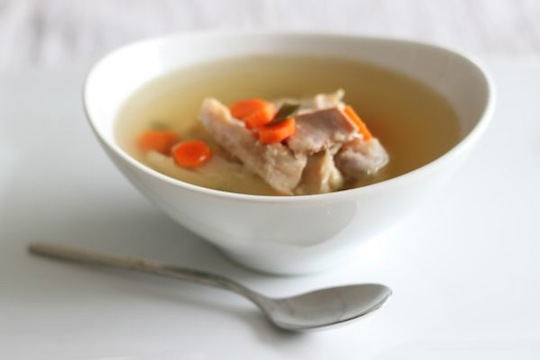 A warm bowl of chicken soup is thought to cure whatever ails you, in body and spirit. Add fresh ginger root and a kombu leaf to the pot, and the soup is even more nourishing.
A warm bowl of chicken soup is thought to cure whatever ails you, in body and spirit. Add fresh ginger root and a kombu leaf to the pot, and the soup is even more nourishing.
Ginger warms the body, potentially giving your immune system a kick-start during cold and flu season. It also has a tradition of calming gastrointestinal distress. While ginger lets itself be known in this soup with its subtle but spicy flavor, kombu is a stealth ingredient. This dried sea vegetable enhances the flavor of broth and leaves behind a wealth of minerals without adding a “seaweedy” flavor.
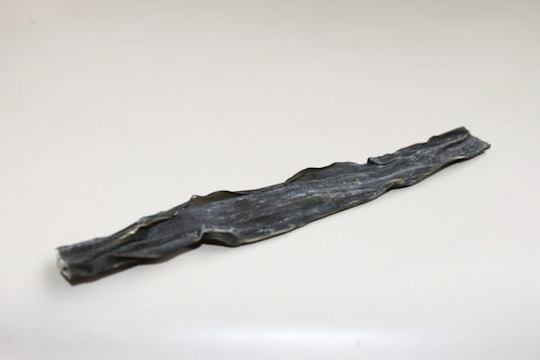
A strip of kombu can be added to any of your favorite soups (or homemade stock) to make the broth mineral-rich. Add kombu at the end of the simmering process, as it doesn’t take long to extract its nutrients. Once simmered, kombu can be thinly sliced and added back to the soup or tossed into a salad.
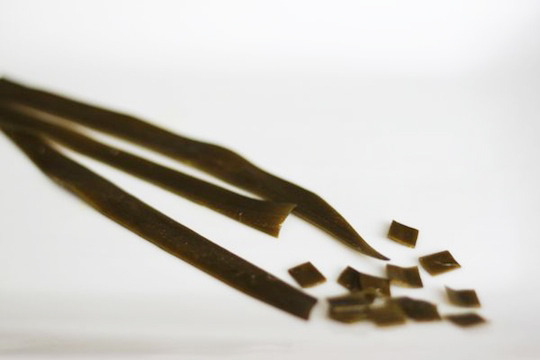
Aside from this recipe, a very simple kombu broth can be made by simmering a 4-inch strip of kombu in 4 cups of water for 4 minutes. A strip of dried kombu can also be dry-roasted in a pan for 5 to 7 minutes then ground into powder. Mix the powder with salt and use it to flavor just about anything.
Kombu keeps well in a sealed bag and is a fantastic ingredient to stash in the pantry. It’s easy to cook with, doesn’t have a strong flavor and adds important micronutrients. What’s not to like?
Servings: 8
Time in the Kitchen: 15 minutes active cooking, plus 2 1/2 hours to simmer
Ingredients:

1 onion, sliced or chopped
3 carrots, sliced
3 celery stalks, sliced
8 ounces (227 g) fresh ginger, unpeeled, cut into 1/2-inch thick chunks
2 garlic cloves, sliced
A pinch of black peppercorns
1 whole chicken, cut into 7 pieces and seasoned with salt
One 5 or 6 –inch piece of kombu
Optional vegetables: shiitake mushrooms, bok choy, carrots, spinach
Instructions:
Combine the onion, carrots, celery, ginger, garlic and peppercorns in a large, deep heavy pot. Add chicken, placing breasts on top. Cover with about 5 quarts of water. Add a generous pinch of salt.
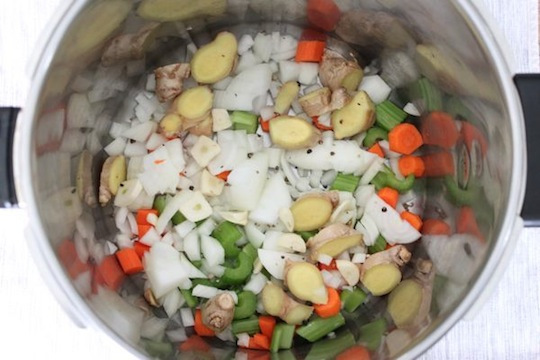
Bring to a boil over medium-high heat. Reduce heat to medium-low, partially cover the pot and simmer until the chicken breasts are cooked through, about 30 minutes.
Remove the chicken breasts from the pot. Cut the meat off the bone and return the bones to the soup pot. Set the meat aside to cool, saving it for another meal.
Continue to simmer the soup, uncovered, until the broth is fully flavored, about 2 hours longer. Add salt if needed.
After 2 hours, add the kombu. Simmer for 5 to 10 minutes.
Use tongs to remove the kombu and chicken from the broth. Set aside.
Pour the broth through a colander set over a pot to strain the rest of the solids out of the broth, discarding the solids (you should have about 8 cups broth).
Bring the broth back to a gentle simmer. Shred the chicken, adding as much as you like back to the pot.
Thinly slice the kombu and add it back to the pot. Add any other veggies you desire (sliced carrots, sliced bok choy or spinach, shitake mushrooms, etc..) Simmer just until veggies are cooked.

Add salt and pepper to taste. For additional flavor, add a drizzle of sesame oil.

Not Sure What to Eat? Get the Primal Blueprint Meal Plan for Shopping Lists and Recipes Delivered Directly to Your Inbox Each Week

January 10, 2014
The Evolution of a College-Age Caveman
It’s Friday, everyone! And that means another Primal Blueprint Real Life Story from a Mark’s Daily Apple reader. If you have your own success story and would like to share it with me and the Mark’s Daily Apple community please contact me here. I’ll continue to publish these each Friday as long as they keep coming in. Thank you for reading!
 Dear Mark,
Dear Mark,
I’m a 21 year old Midwesterner with prehistoric eating habits, but a modern day tale to tell.
I don’t have a story of amazing weight loss, curbed eating habits, or winning a grand competition. What I have is a life changing experience I hope will inspire those older and younger alike to view life in a fresh light.
As a younger kid, my family moved constantly. My father, a mining engineer, was often finding himself being transferred, moved around, or having to find a new job. This all meant that I never had the chance to really set my roots and become fully involved with the community or school I was a part of. But there was a community that was always there for me: The Internet.
Being that I never really took the time to make any “real” friends, I put almost all of my social effort into cyberspace. Throughout all of middle school and high school I was glued to my computer screen. 80+ hours a week was the norm (no exaggeration here).
In those times, plenty of sleep, good nutrition, and an active lifestyle didn’t even exist. Why would I want to be like one of those “healthy” jocks at school anyway? They were mean, and I didn’t want to be mean. When you’re always the new kid you learn what bullying is the hard way.
On the internet you’re socially invincible, or so you think. You can add/delete friends within a moment’s notice. For my young, fragile, and over-analytical mind this was my domain. My social life consisted of people around the globe who I had never met (and still haven’t) in real life. I still consider these people my friends, but now I know there is something genuine about being able to shake hands, hug, and see the face of someone you care about.
Being your fairly standard American family of four, you won’t be surprised to know my mother, father, and older brother were all overweight. You may be surprised to know I was always at about the right weight or a little under. I didn’t gain weight, and only lost weight during bad illness (at least twice a year like clockwork).
Our diet was definition SAD. My father’s specialty, and my favorite meal, was biscuits and gravy. Luckily, my father loves his meat, so at least there was plenty of MSG laden sausage in the gravy. Spaghetti was my brother’s favorite food and a constant staple in our diets. Looking back on what we ate it’s really no wonder why my acne was always terrible.
The saving grace of our diets was that we’re a family of hunters, so deer, turkey, etc. was a fairly often occurrence. My father is also a big fan of veggies, so every meal usually consisted of a meat, a veggie, and a side (rolls, bread, pasta, you get the idea…).
Those couple of strong points and my habit of being the slowest eater at the table may be what saved me from being overweight. The 80+ hours sitting in a computer chair definitely wasn’t helping.
Skip ahead a few years to the end of my sophomore year in college… I wasn’t very motivated, had mediocre grades, and spent most of my time sleeping, or on my computer and oh boy did it show.

I hadn’t taken the time to seek out an internship or job for that summer and that wasn’t okay with my parents. They swiftly signed me up, via my uncle, to work summer labor at a sand mine. The job consisted of shoveling sand for 40 hours a week during one of the hottest Illinois summers ever.
Talk about not being prepared. Eight plus years of sitting at a computer will all but atrophy the little muscle you had as a 5’10” skinny-fat college kid. I was thrown into what could be described as a loud, machine filled, mid-westernized Sahara where you are asked to move dunes, taller than yourself, with nothing but a wheelbarrow and a shovel.
Knowing I wasn’t at all prepared for it, I began eating “healthy” and “working out”. I began doing online research of “health” and found myself eating mostly spinach salads with tuna, cottage cheese, and Sriracha sauce. For breakfast I usually ate plain Greek yogurt with vanilla protein powder and this super healthy high fiber whole grain cereal mixed in.
Needless to say, a couple months of this and I did lose weight. My troubling pudgy belly was gone, and I felt confident in my body. Though my acne still persisted, I had some nice back pain to go along with being a 20 year old college student, and my energy levels were dismal.
I spent my free time constantly researching health. My newly acquired smart phone was (and still is) an amazing source of information. I learned so many things about the body’s processes, how nutrients work, etc. I read Tim Ferriss’s The 4-Hour Body because I loved the term “bio-hacker”. I read countless blogs and articles, all of which displayed varying opinions on what was actually healthy. I pieced together what I believed was correct. (Come to find out a while later, what I had thought was right was nearly Primal.)
This path of health came to an end when my grandmother, thinking I was “too skinny” (and she was right), constantly fed me brownies… Then two things happened: College began and my then year-long relationship came to a rough and abrupt end.
Needless to say, that fall semester was spent doing anything and everything as long as it wasn’t considered healthy. I quickly found myself back at my computer, baking cookies for my fraternity brothers, drinking, and feeling terrible. Worst of all, the pudgy tummy was back!
During winter break I decided things needed to change. I pulled out my phone and began my quest for health again.
Starting with spinach, tuna, and Greek yogurt I tacked on a workout program (P90X2). I more or less locked myself in my room for two months. My health was priority, no more social life, no more distractions. I wasn’t going to let peer pressure hold me back.
During the first month, I found Paleo. Since I was tired of reading countless opinions on the internet, I bought a book: Robb Wolf’s The Paleo Solution. I immersed myself in the Paleo lifestyle, I even had a pair of Vibram FiveFingers from my “3 miles a day” cardio stint the previous summer!
Mark’s Daily Apple was also a huge source of information for me, so I bought The Primal Blueprint and engulfed myself within it as well. I was a big fan of the way the PB dug into the details of living LIFE Primal, not just eating Primal.
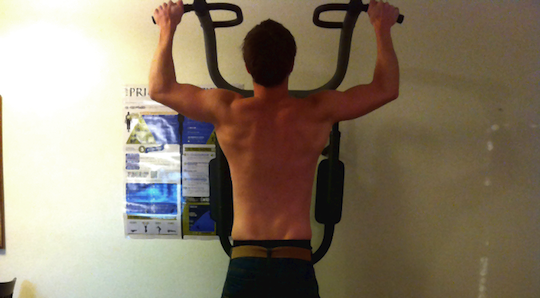
The Primal Connection was next on my list, and it too was an amazing read. I have to personally thank you, Mark. You have taught me so much and allowed me to not only improve myself, but help my parents and brother all lose 30-40 lbs each, while changing their lifestyles.
What started as me being a shut-in and ridiculed, turned into me being a teacher to most everyone I know. People saw the change in me, and in helping myself I learned of my love for helping others.
Since starting Paleo/Primal I have lost 20 lbs of fat, gained ~20 lbs of muscle, helped many friends and family members change their habits, got rid of my acne, and became more energetic and motivated. My motivation lead to improved grades, an internship, and now multiple full-time job offers.
On top of all of this, one of my many friends whom I introduced to Paleo/Primal came to me with an idea. With that idea we are now starting a nutritional and sports supplement company that aims to use only natural ingredients and no harmful chemicals, “Mobius Nutrition”.
Months of planning, research, and work have all come together for the launch of our crowdfunding campaign (now expired) for our first product “Primer”, an energy drink mix to break the status quo of unhealthy energy drinks/shots.
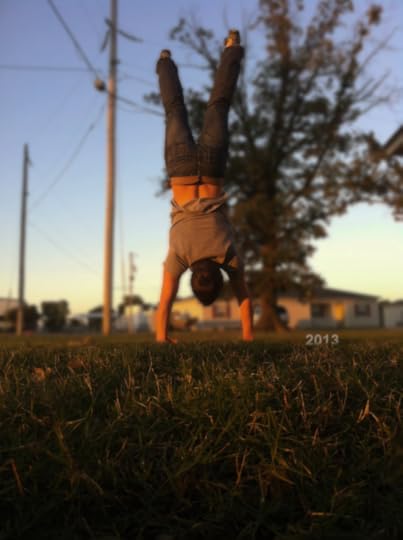
I want to thank you Mark for your priceless knowledge and inspirational dedication to the health of others. I hope one day to be as inspirational as you.
While I stand here at my desk, wearing my toe shoes, and typing out this story to you, I only have one more thing to say:
- Michael E.
Like This Blog Post? Dig Deeper with Primal Blueprint Books and Learn How You Can Reprogram Your Genes to Become Leaner, Stronger and Healthier

Mark Sisson's Blog
- Mark Sisson's profile
- 199 followers



